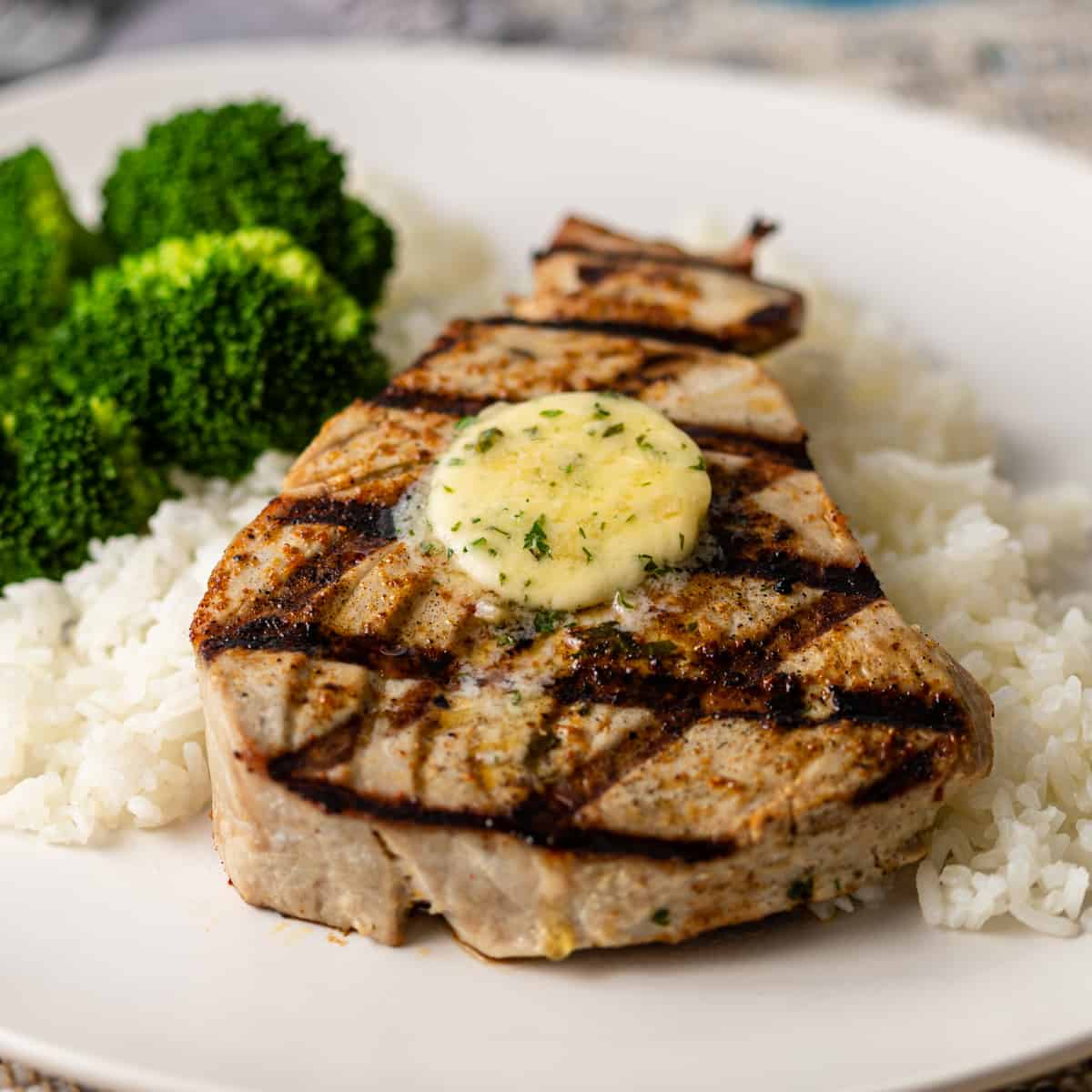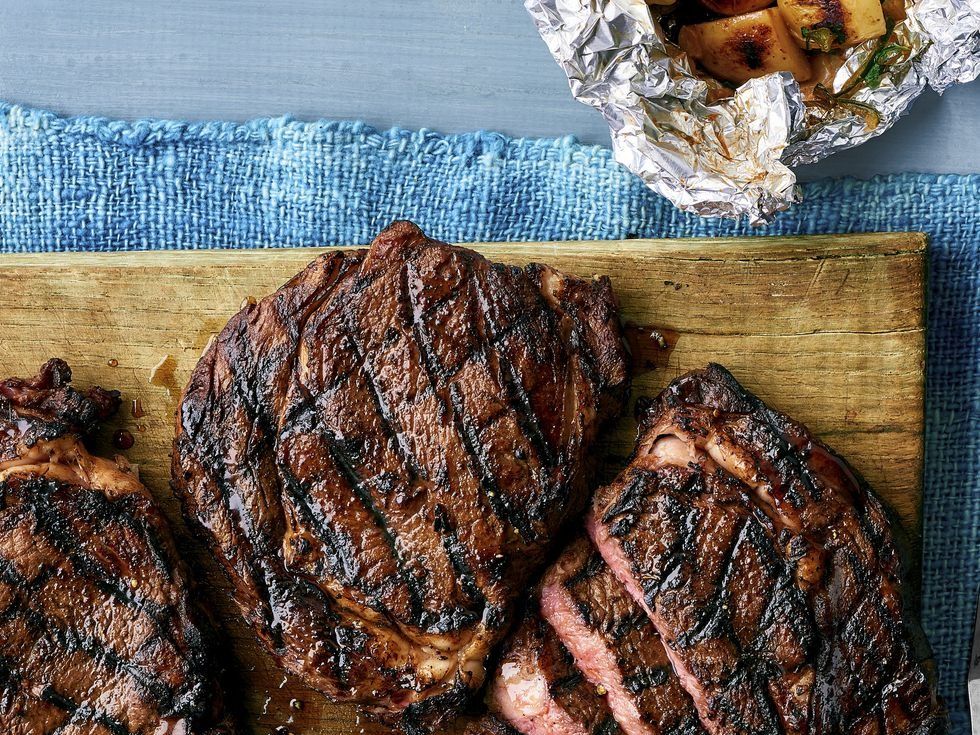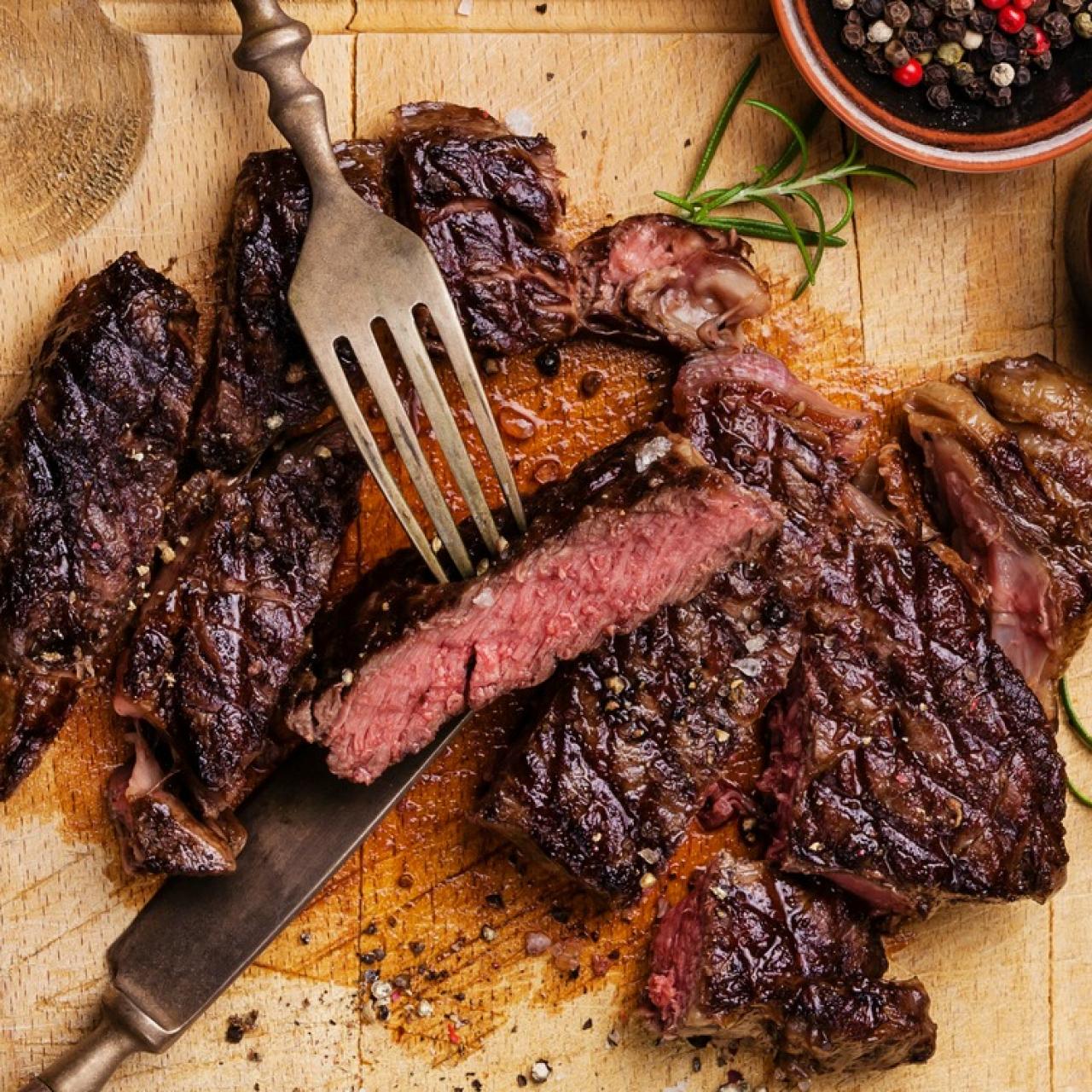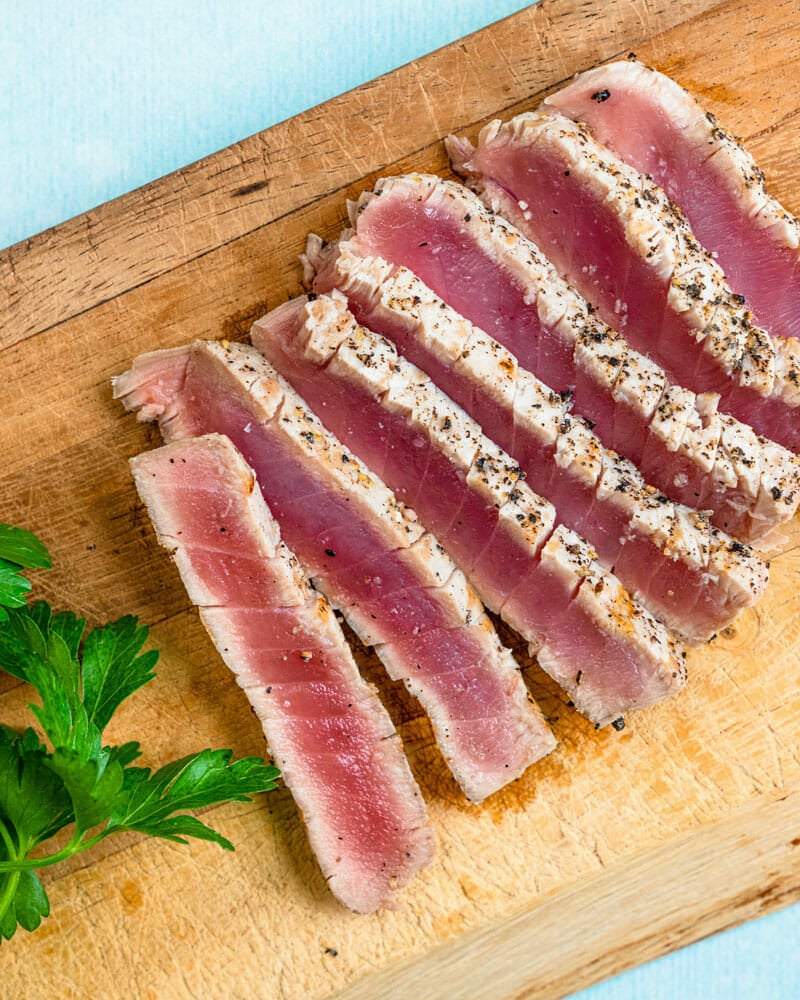



I. Introduction: Unveiling the Delights of Grilled Tuna Steak
A. A Culinary Gem: Tuna steak, a culinary gem revered for its rich, buttery flavor and versatility, transcends the ordinary when grilled to perfection.
B. Healthful and Flavorful: This delectable seafood choice not only tantalizes the taste buds but also boasts an impressive array of health benefits. It’s an excellent source of lean protein, omega-3 fatty acids, and essential vitamins, making it a nutritious addition to any diet.
C. A Grilling Masterpiece: With the right technique and simple preparation, you can transform humble tuna steaks into grilling masterpieces in your own backyard. Embrace the art of grilling and elevate your culinary skills with this delectable dish.
II. Essential Equipment for Grilling Tuna Steak
A. Grilling Essentials: Gather the essential grilling tools to ensure a smooth and successful grilling experience. Your grilling arsenal should include a grill, grill tongs, a spatula, and a basting brush.
B. Grilling Utensils: Choose sturdy grilling utensils that can withstand the heat and allow for precise handling of the delicate tuna steaks. Long-handled tongs and a sturdy spatula will become your trusted grilling companions.
C. Preparation Tools: Prepare sharp knives, measuring cups, and a mixing bowl for creating marinades or applying seasonings. These tools will help you prepare the tuna steaks for their grilling journey.
III. Selecting the Perfect Tuna Steak
A. Species Matters: When selecting tuna steaks for grilling, opt for species known for their grilling qualities, such as ahi tuna (yellowfin tuna) or skipjack tuna. These varieties offer a firm texture and rich flavor that stand up well to grilling.
B. Freshness is Key: Choose fresh tuna steaks that exude vibrant color, firm texture, and a mild ocean aroma. Freshness is paramount to ensuring the best flavor and texture for your grilled tuna steaks.
C. Thickness and Size: Select tuna steaks that are about 1-inch thick and 6-ounces in size. This thickness ensures even cooking and allows for the perfect sear, while the 6-ounce size provides a satisfying serving.
IV. Preparing the Tuna Steak for Grilling
A. Pat Dry: Pat the tuna steaks dry with paper towels to remove excess moisture. This simple step promotes even browning and prevents the tuna steaks from sticking to the grill grates.
B. Seasoning Simplicity: Season the tuna steaks with simple salt, pepper, and olive oil for a classic flavor profile. This basic seasoning enhances the natural flavors of the tuna without overpowering them.
C. Marinade Magic: Elevate your tuna steaks with a marinade of your choice, adding depth of flavor and tenderness. Explore a variety of marinades to suit your taste preferences, incorporating ingredients like soy sauce, ginger, garlic, or sesame oil.
V. Grilling Techniques for Perfect Tuna Steak
A. Preheat the Grill: Preheat the grill to medium-high heat, ensuring even heat distribution across the grilling surface. This ensures that the tuna steaks cook evenly and develop those perfect grill marks.
B. Oil the Grates: Lightly oil the grill grates using a high smoke point oil, such as canola or avocado oil. This prevents the tuna steaks from sticking and promotes easy maneuvering during grilling.
C. Grilling Time: Grill the tuna steaks for 2-3 minutes per side for medium-rare, adjusting the time for desired doneness. Use a meat thermometer to ensure the internal temperature reaches 125°F (52°C) for medium-rare.
D. Basting for Flavor: Baste the tuna steaks with marinade or melted butter during grilling for added flavor and moisture. This simple step keeps the tuna steaks juicy and enhances their overall taste.

VI. Achieving the Perfect Doneness
A. Internal Temperature: Use a meat thermometer to check the internal temperature of the tuna steaks. For medium-rare, aim for an internal temperature of 125°F (52°C). This ensures that the tuna steaks are cooked to perfection, retaining their tenderness and flavor.
B. Color and Texture: Observe the color and texture of the tuna steaks. Medium-rare tuna steaks will have a slightly pink center and a firm, but not hard, texture. Overcooking can dry out the tuna steaks, compromising their flavor and tenderness.
C. Resting is Crucial: Allow the grilled tuna steaks to rest for 3-5 minutes before serving. This resting period allows the juices to redistribute throughout the flesh, resulting in a more tender and flavorful experience. Resist the urge to slice into the tuna steaks immediately after grilling.
VII. Accompaniment Ideas for Grilled Tuna Steak
A. Complementary Sides: Pair the grilled tuna steak with a selection of complementary sides that elevate the entire dish. Roasted vegetables, such as asparagus, bell peppers, or zucchini, offer a colorful and healthy accompaniment. Quinoa or brown rice provide a satisfying base, while a refreshing salad adds a touch of lightness.
B. Sauces and Condiments: Enhance the flavors of your grilled tuna steak with a drizzle of your favorite sauce. Chimichurri, a vibrant sauce made with parsley, garlic, olive oil, and vinegar, adds a fresh and zesty note. Lemon-caper sauce offers a bright and tangy counterpoint, while a simple vinaigrette with fresh herbs provides a lighter touch.
C. Fresh Herbs and Garnishes: Elevate the presentation of your grilled tuna steak with a sprinkle of fresh herbs. Chopped cilantro or parsley add a burst of color and freshness. Consider adding a touch of crunch with toasted nuts or seeds, such as sesame seeds or sliced almonds.
VIII. Tips for Grilling Success
A. Avoid Overcrowding: Avoid overcrowding the grill with too many tuna steaks. This ensures even heat distribution and prevents the tuna steaks from steaming instead of grilling. Space the steaks out evenly on the grill for optimal results.
B. Flip Once: Resist the urge to flip the tuna steaks too frequently. Let them sear undisturbed for a few minutes to achieve those perfect grill marks. Once you see a nice sear develop on the first side, then gently flip the tuna steaks for even cooking.
C. Don’t Overcook: Overcooking can be the enemy of a delicious tuna steak. The delicate flesh can dry out quickly, compromising its flavor and texture. Use a meat thermometer and stick to the recommended grilling times for the desired doneness.
IX. Variations and Flavor Explorations
A. Marinade Adventures: Experiment with different marinades to create a world of flavor possibilities. Explore Asian-inspired marinades with soy sauce, ginger, garlic, and sesame oil. For a Mediterranean twist, try a marinade with olive oil, lemon juice, oregano, and fresh herbs. You can even create a Latin American-inspired marinade with lime juice, cilantro, and chili flakes.
B. Herb and Spice Rubs: Rub the tuna steaks with a blend of herbs and spices for a dry rub alternative. Paprika, cumin, oregano, thyme, or a combination of your favorites can add an extra layer of flavor and complexity to the dish.
C. Global Inspirations: Draw inspiration from global cuisines to create exciting flavor profiles. Create a teriyaki-style marinade with soy sauce, mirin, and sake for an Asian influence. For a Mediterranean approach, try a marinade with olive oil, lemon juice, capers, and fresh herbs. Explore the culinary world and create your own unique flavor combinations.
X. Conclusion: Grilled Tuna Steak Mastery
A. A Culinary Triumph: Mastering the art of grilling tuna steak is a culinary triumph. With a few simple techniques and a dash of creativity, you can transform this versatile seafood into a restaurant-worthy dish in the comfort of your own backyard.
B. Flavorful and Versatile: Grilled tuna steak offers a winning combination of flavor, versatility, and health benefits. It’s a perfect centerpiece for a light summer lunch, a satisfying weeknight dinner, or even a casual backyard barbecue.
C. Embrace the Grill: So, fire up the grill, gather your ingredients, and embark on this culinary journey. With these tips and techniques, you’ll be well on your way to grilling perfect tuna steaks and creating delicious memories around the table.